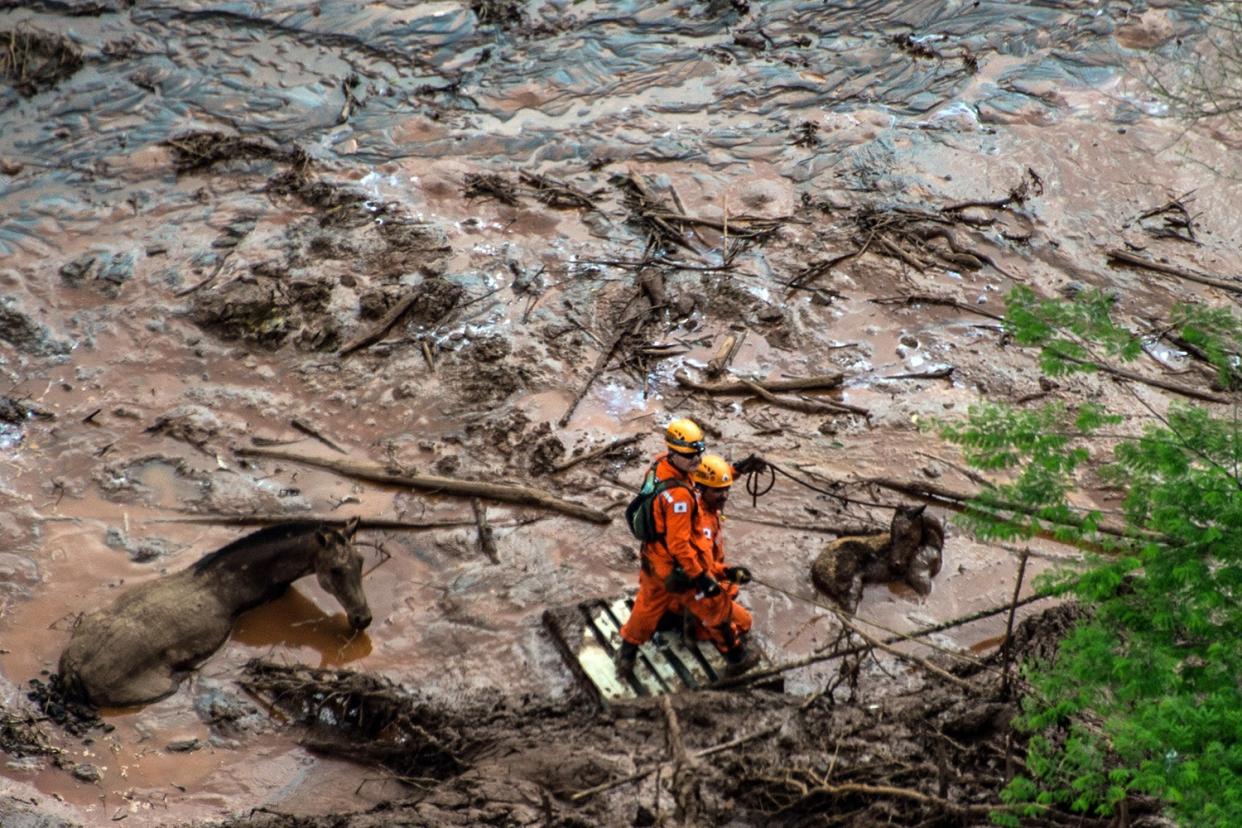Mining giant BHP ups iron ore targets as it restarts dig at 2015 disaster mine

Two dams containing by-products of mining work collapsed
(Christophe Simon/AFP/Getty Images)London mining giant BHP Billiton today jacked up its production forecasts due to resuming operations at its Samarco mine in Brazil five years after the mining disaster there.
BHP — one of the biggest companies on the FTSE 100 — operates Samarco with rival mining giant Vale.
In November 2015, two dams containing by-products of its mining work there collapsed, causing polluted water to devastate nearby villages, killing 19 people and polluting 400 miles of rivers and poisoning water supplies.
Samarco reopened last month, and BHP today said that meant it could upgrade its iron ore production targets for the year to 245-255 million tonnes.
In this calendar year, Samarco is expected to ramp up to 7 million tonnes, gathering pace as the months go on.
The restart is being phased in, with only one of its two concentrators currently operating to refine the rock being blasted from the mine.
Dammed water is no longer being used to store its waste product, known as tailings.
Samarco now has a filtration system that removes the water from the tailings, after which it is then dry-stacked in a disussed mine nearby.
Before the disaster, Samarco was producing 29 million tonnes a year.
The restart has meant 1500 staff are employed at the site.
Demand for iron ore has been booming as China needs the metal for steel to feed its factories’ demands.
Prices of the metal have been soaring since April as Beijing injected state funds into its industrial sector to overcome the economic damage of Covid.
In an echo of Rio Tinto’s statement yesterday, BHP also said its Western Australia iron ore mines had been pushing out record production and its Escondida copper mine in Chile had been performing strongly, leading to a tweak upwards in the lower end of its forecasts.
Those updates outweighed a hefty $1.25 billion downgrade to its valuation of its coal assets — due to be sold — after China banned Australian coal exports. Beijing imposed the ban after Australia questioned China’s actions at the start of the global Covid pandemic.
BHP shares rose 27p to 2138p.
BHP sees iron ore as a strong and steady cash generator to fund investments in minerals to be used in electric vehicles and green energy technologies in the future.
Copper and nickel are its primary targets. Copper is likely to have strong future demand for wiring in electic-powered machinery and nickel is used in batteries.
BHP has the biggest copper mine in Escondida, Chile as well as the huge Olympic Dam in Australia.
It has nickel deposits in the Nickel West mine, also in Australia and is looking for more opportunities.
Read More
BHP Billiton paves way for Samarco restart after court deal
BHP Billiton and Vale begin process to settle claims over Samarco
Jim Armitage: BHP Billiton is being smart about the Samarco tragedy

 Yahoo Movies
Yahoo Movies 
